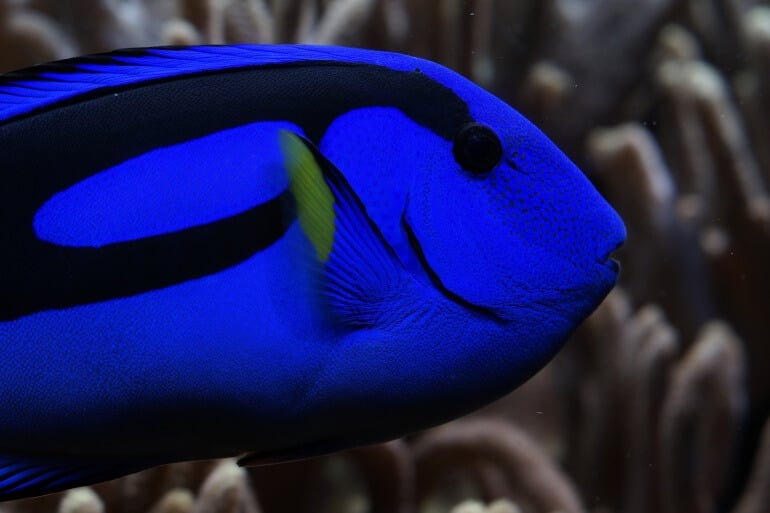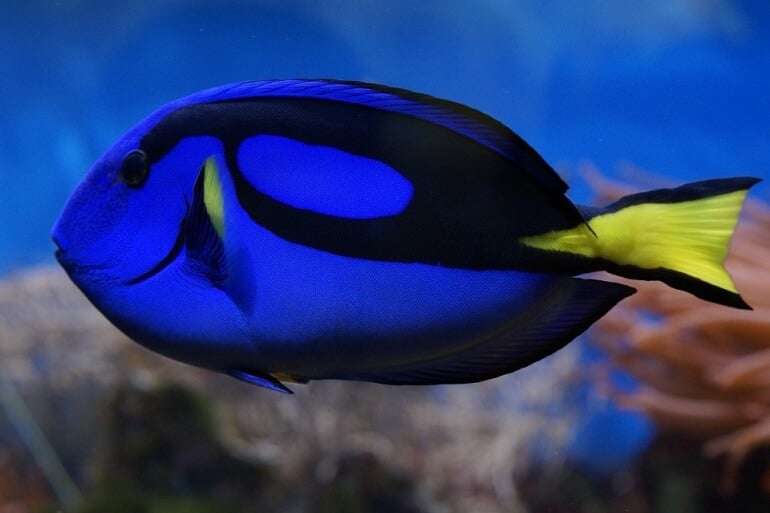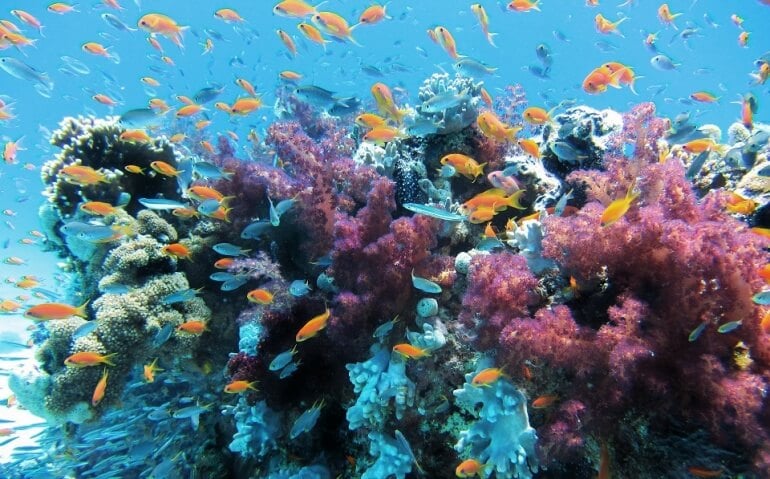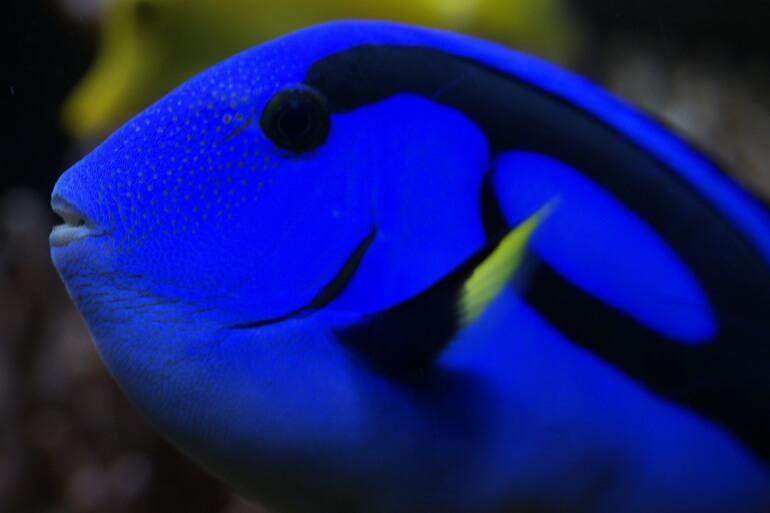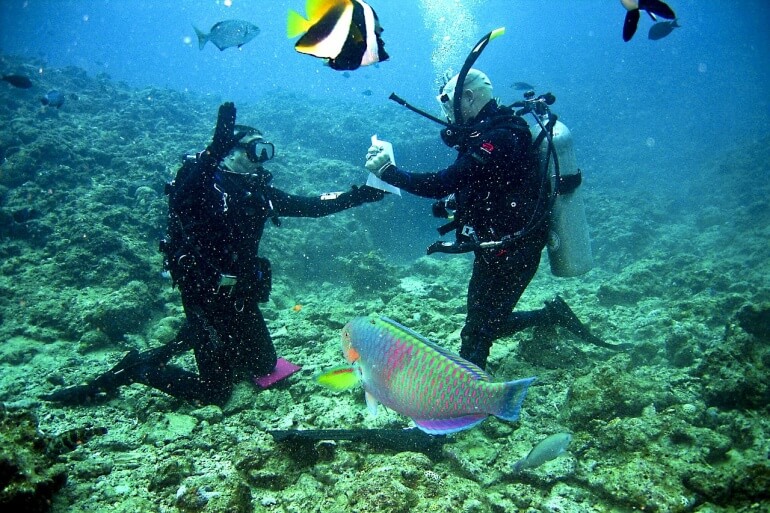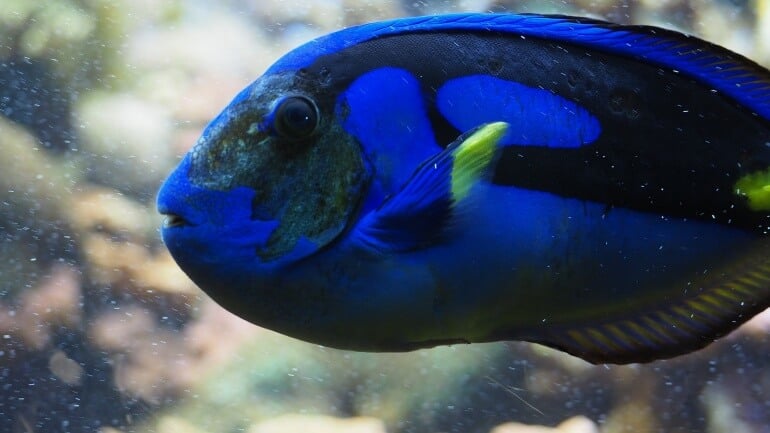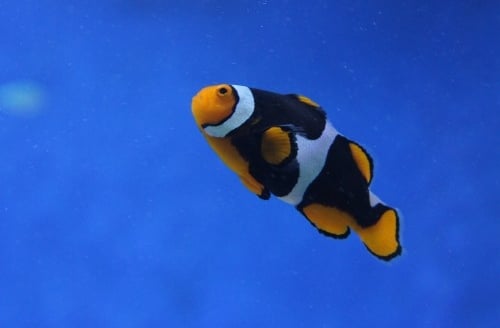We’re Celebrating ‘Finding Dory’ With 11 Astonishing Facts About Surgeonfish
Finding Dory, the hotly anticipated sequel to Finding Nemo, is set to be released soon. The loveable star of the film, Dory, voiced by Ellen DeGeneres, is a palette surgeonfish who lives on a tropical reef.
The effects on animals featured in popular films can be far-reaching and lead to a rise in humans buying them as “pets”. The RSPCA had to deal with almost 10,000 surrendered fish in the months following the Nemo craze.
To celebrate the release of the film – which is rumoured to have a strong animal rights message – we decided to take a closer look at the fascinating lives of surgeonfish. Consider the following fun facts about them:
The palette surgeonfish’s vibrant blue-and-yellow colouring has earned the fish nicknames such as blue tang, royal tang and blue surgeonfish.
The tails and backs of surgeonfish are covered with venomous spines, so when they’re caught by a predator, they can unfold the spines to defend themselves.
Juvenile fish shelter in coral and often stay in small groups for protection.
They eat small amounts of plankton in addition to grazing on algae, using their small teeth to pull algae from rocks and coral.
They can adjust the intensity of their colouration from light blue to deep purple. When they’re stressed, their colour darkens to communicate potential dangers to other fish.
https://www.youtube.com/watch?v=fOQF67b3A2w
In the wild, these striking fish can live for over 30 years.
But in captivity, they don’t make it anywhere near that. Even under the “best” aquarium conditions, they’re likely to survive for around only eight years.
Since the blue surgeonfish is almost impossible to breed in captivity, juvenile fish are captured from the ocean to feed the demand for “exotic” fish tanks.
They can be shipped for thousands of miles from their homes in the tropics of the Indian and Pacific oceans in tiny plastic bags. Many don’t survive this horrendous journey.
In tanks, they suffer from lack of proper nutrition, a stressful environment, vulnerability to parasites, lack of space and competition with fish of similar species, all of which can cause a premature death.
No aquarium can replicate the surgeonfish’s natural environment. These animals belong on coral reefs, not in tiny glass tanks.
If you’ll be taking your kids to see the new film or are planning to enjoy it on your own, remember that these fish suffer when they’re stolen from their ocean home. Spread the word that no matter how pretty Dory may look, her kind do not belong in our homes or in aquariums:

